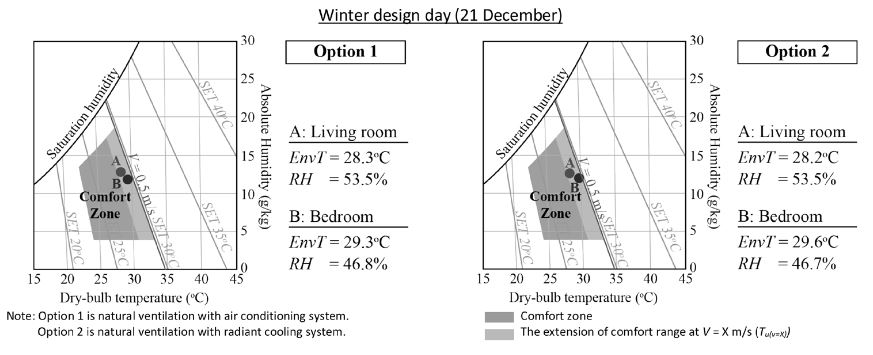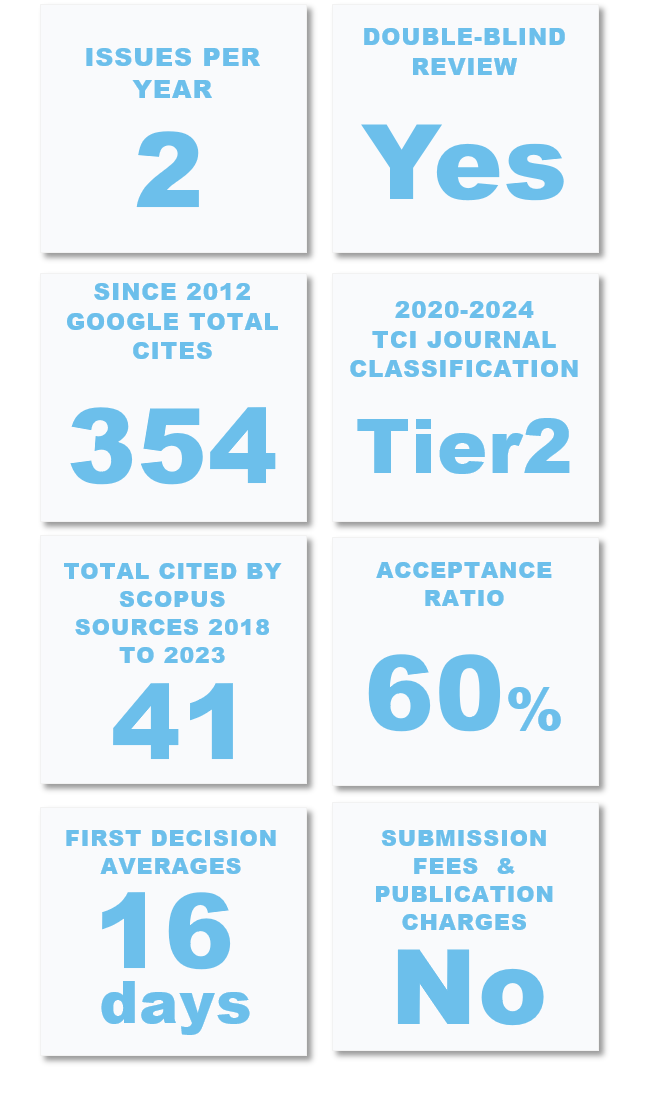Passive Design Strategies with Active System Enhancing Indoor Thermal Environment and Comfort of a Condominium in Bangkok
Keywords:
High-rise, Residential building, Urban area, Thermal environment, Indoor thermal comfortAbstract
Urbanization, social change, and the development of housing for foreign expatriates coupled with the extension of a mass transit system, the condominium market in Bangkok have grown rapidly. It has led to an increase in energy consumption in the residential sector since an air conditioning system plays a vital role in maintaining indoor thermal comfort. In this study, the combination of passive design strategies with the active system was proposed regarding the field measurement and the simulation results using EnergyPlus version 8.4. An initial design modification, based on the three-tier design approaches to achieve sustainable building was carried out in order to improve indoor thermal comfort and reduce cooling energy consumption for a high-rise condominium unit in a hot-humid climate of Bangkok.
Downloads
References
American Society of Heating, Refrigerating and Air- conditioning Engineers [ASHRAE]. (2013). ASHRAE handbook: Fundamentals. Atlanta, GA: Author.
Auliciems, A. (1981). Towards a psychophysiological model of thermal perception. International Journal of Biometeorology, 25(2), 109-122.
Auliciems, A. & Szokolay, S.V. (2007). Thermal comfort (2nd ed.). Retrieved from http://www.researchgate.net/publication/234169993_THERMAL_COMFORT
Brager, G. S. & De Dear, R.J. (1998). Thermal adaptation in the built environment: a literature review. Energy and Building, 27(1998), 82-96.
Cook, J. (1989). Passive cooling. London, England: The MIT Press.
Dimoudi, A. (1996). Passive cooling of buildings, Passive Cooling of Buildings [Santamouris, M. & Asimakopoulos, D. (eds.). James & James (Science Publishers) Ltd., London, 35-55.
Energy Policy and Planning Office, Ministry of Energy. (2016). Energy statistics of Thailand 2016. Retrieved from http://www.eppo.go.th/index.php/th/eppo-intranet/item/11342-energy-statistics-2559
Feustel, H.E. (1993). Hydronic radiant cooling: Overview and preliminary performance assessment. Lawrence Berkeley Laboratory Report No. 33194.
Gagge, A. P., Fobelets, A.P., & Berglund, L.G. (1986). A standard predictive index of human response to the thermal environment, ASHRAE Transac, 92(2B), 709-731.
Givoni, B. (1994). Passive and low energy cooling of buildings. New York, NY: John Wiley & Sons, Inc.
Khedari, J., Yamtraipat, N., Pratintong, N. & Hirunlabh, J. (2010). Thailand ventilation comfort chart. Energy and Buildings, 32(3), 245-249.
Kubota, T., Jeong, S., Toe, D. H. C., & Ossen, D. R. (2011). Energy consumption and air-conditioning usage in residential buildings of Malaysia. Journal of International Development and Cooperation, 17(3), 61-69.
Lechner, N. (2015). Heating, cooling, lighting: Sustainable design methods for architects. Hoboken, NJ: John Wiley & Sons, Inc.
Li-Zenn Publishing. (2015). New design condominium Thailand. Bangkok, Thailand: Author.
Niu, J. (2003). Some significant environmental issues in high-rise residential building design in urban areas. Energy and Building, 36(2004), 1259-1263.
Plus Property. (2016). Plus property focus: Half-year research paper, July-December 2015. Retrieved from http://www.plus.co.th/News-and-Articles/Plus-Property-Focus-Half-year-research-paper-July---December-2015.
Rijai, H.B., Humphreys, M., & Nicol, F. (2015). Adaptive thermal comfort in Japanese houses during the summer season: Behavioral adaptation and the effect of humidity. Buildings, 5(2015), 1037-1054.
Srisuwan, P. (2017). Title of Passive design strategies with active system enhancing indoor thermal comfort of a high-rise condominium in hot-humid climate of Bangkok. (Unpublished doctoral dissertation). Graduate School of Science and Engineering, Saga University, Saga, Japan.
Srisuwan, P. , & Kojima, S.BUILT 13, 201942PBSrisuwan, P., & Kojima, S. (2016). Field investigation on indoor thermal performance of a high-rise residential unit in Bangkok. International Journal of Building, Urban,Interior and Landscape Technology, 7(September - October), 13-22.
Srisuwan, P., & Kojima, S. (2017). Field investigation on indoor thermal environment of a high-rise condominium in hot-humid climate of Bangkok, Thailand. Procedia Engineering, 180, 1754-1762.
Szokolay, S.V. (2008). Introduction to architectural science: the basis of sustainable design (2nd ed.). Woburn, MA: Architectural Press.
Thailand, Meteorological Department. (2013). Bangkok’s weather data, 2004-2013 [computer file].
Thailand, Ministerial Regulation (2009). Prescribing type or size of building and standard, criteria and procedure in designing building for energy conservation B.E. 2552. Retrieved from http://www2.dede.go.th.
Thai Green Building Institute. (2019). Project. Retrieved from http://www.tgbi.or.th/project
U.S. Department of Energy. (2015). EnergyPlus version 8.7 documentation: Engineering reference. Retrieved from https://energyplus.net/sites/all/modules/custom/nrel_custom/pdfs/pdfs_v8.7.0/EngineeringReference.pdf

Downloads
Published
How to Cite
Issue
Section
License
Copyright (c) 2019 International Journal of Building, Urban, Interior and Landscape Technology (BUILT)

This work is licensed under a Creative Commons Attribution-NonCommercial-NoDerivatives 4.0 International License.











